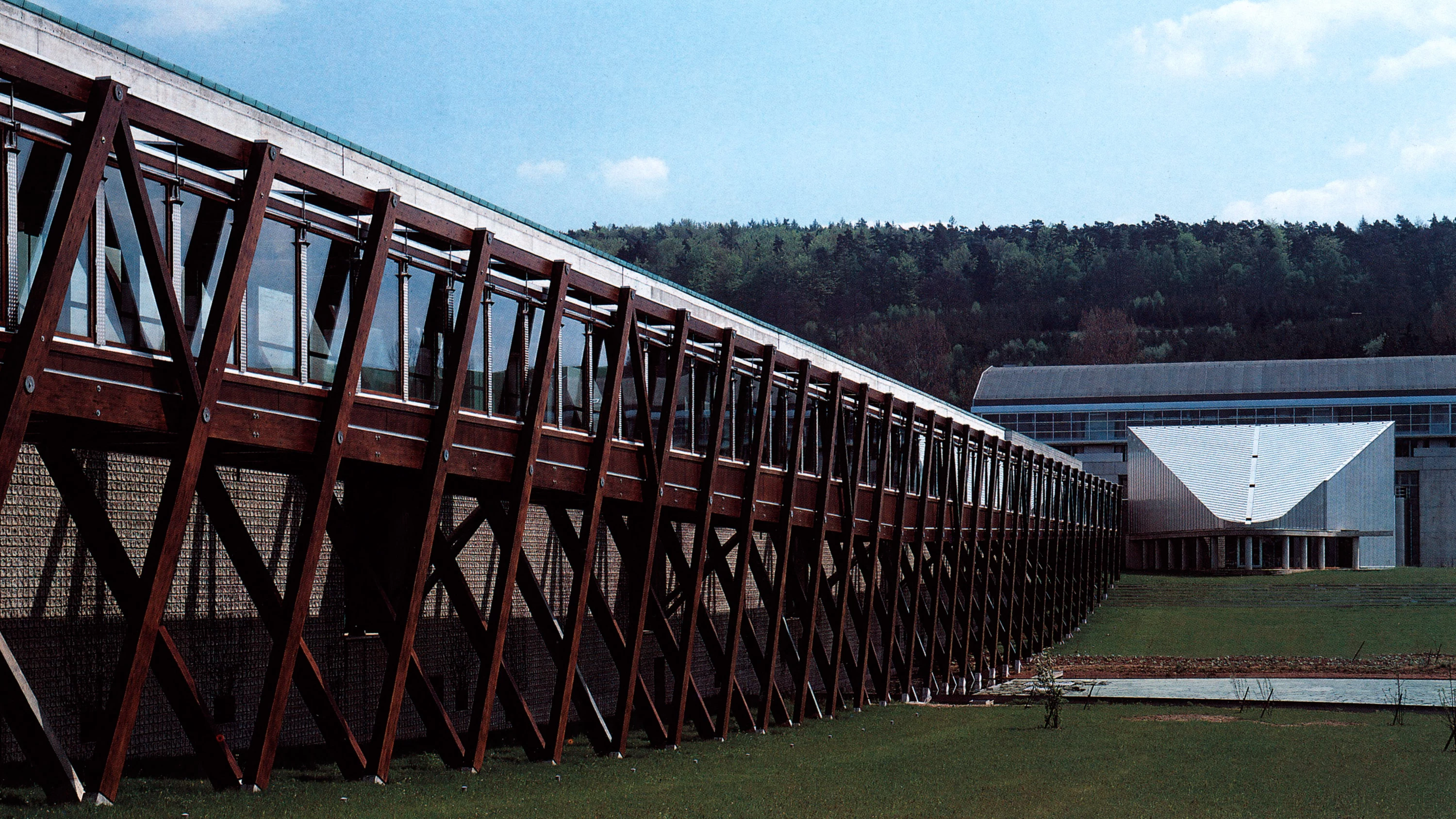Fábrica Braun, Melsungen
James Stirling Michael Wilford- Type Factory Industry
- Material Concrete
- Date 1986 - 1992
- Country Germany
- Photograph Richard Bryant
True masters of architecture tend to make each new work of theirs a surprise, but only some of them manage to maintain this effect throughout their careers. Le Corbusier, for instance, put his followers off track at Marseilles, and still totally disoriented them at Ronchamp. Ronchamp and the Maisons Jaoul were two works which disturbed the young Stirling because of the way they violated the most orthodox principles of modernity.
And Stirling in turn perplexed both his defenders and detractors in his last built work: a factory in the German countryside which has had the effect of exorcising the curse that always seemed to follow his industrial projects. Though it won only second place in the competition that was convoked for the purpose, the client decided to carry out his proposal, which after all was budgeted only 3% more than the winning entry, a featureless construction without personality.
The general idea of the complex is closely linked to its emplacement in a bucolic, rural site, to which Stirling applied his ever faithful system of composing around singular pieces picturesquely placed about in the midst of the landscape.
A long access wall cuts across the smooth valley transversally to form a sort of dike that screens the different industrial buildings behind from view. At one end of it is the administration building, a curved structure reminiscent of Le Corbusier’s Swiss Pavilion.
On the southern end rises a piece of what is to be the production building, a shed whose sections evoke Behrens’s proto-modem AEG factories. To the east, the huge storage buildings end in a truncated elliptical cone clad in prepatinated copper, the greenish color combining its artificial character with the surrounding nature.
If in the Sixties he was considered the father of hightech and in the Eighties he was proclaimed the king of postmodern style, with this work Stirling proved once and for all that he was beyond classification and that he was ready to begin a new era, now tragically interrupted… [+]
Cliente
Braun Melsungen AG.
Arquitectos
James Stirling, Michael Wilford con Walter Nageli.
Colaboradores
Ludger Brands, Georg Braun, Annegret Burg, Heike Biittner, Desmond Byrne, Conni Conradi, Martin Focks, Robert Haas, Ferdinand Heide, Lothar Hennig, Renate Keller, Thomas Kemmermann, Joachim Kleine-Allekotte, Regula Klotl, Sabine Krause, RalfLez, Jorg Liebmann, Gudrun Ludwig, Brendan MacRiabhaigh, Sean Mahon, Bemdt Niebuhr, Paul Panter, Dieter Pfannenstiel, Bernd Reinecke, Helia Rolfes, Maria Rossi, Norberto Schomberg, Mirjam Schwabe, Jacques Thorin, Julia Tophof, Gretchen Wemik, Renzo Vallebouna, Sigfried Wemik.
Consultores
Walter Hotzel AV, Gunnar Martinsson & Karl Bauer, Polonyi & Fink.
Fotos
Richard Bryant / ARC AID.







